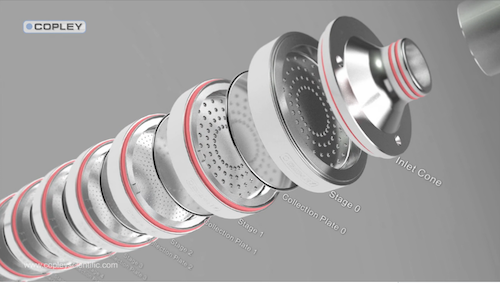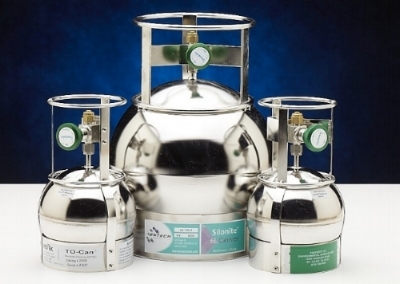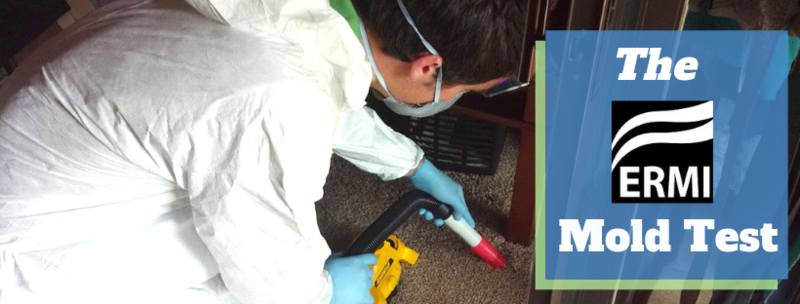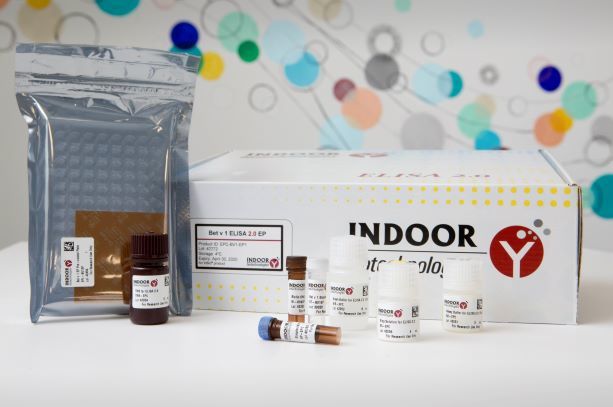IAQ Sampling Methods
Lighthouse 3016 IAQ Micron Particle Counter
KES utilizes the Lighthouse Handheld 3016 IAQ - the newest, most advanced handheld micron particle counter on the market, featuring a Mass Concentration Mode that approximates density in µg/m3. Providing up to 6 particle size channels (0.3µm - 10µm Size Range) of simultaneous counting, the Lighthouse handheld micron particle counter immediately displays cumulative and differential micron particle count data as well as temperature & relative humidity data.
Overview of Particle Impactors (Andersen-Type Samplers for Bacteria)
 This method of air sampling tests for bacteria and involves drawing a measured volume of air over culture media in Petri dishes. The Petri dishes are incubated in the laboratory so that the organisms that are impacted onto the plate can grow. For the standard enumeration and identification of bacteria, KES samples the air using an EMSL VP-400 Microbial Sampler and Tryptic Soy Agar (TSA) plates. For gram negative bacteria, KES samples the air using MacConkey Agar (MAC). At the client’s election, KES will deploy methods EMSL M-010, which will test for and identify the three (3) most prominent bacteria found in the sample or EMSL M-011, which will test for and identify the five (5) most prominent bacteria found in the sample.
This method of air sampling tests for bacteria and involves drawing a measured volume of air over culture media in Petri dishes. The Petri dishes are incubated in the laboratory so that the organisms that are impacted onto the plate can grow. For the standard enumeration and identification of bacteria, KES samples the air using an EMSL VP-400 Microbial Sampler and Tryptic Soy Agar (TSA) plates. For gram negative bacteria, KES samples the air using MacConkey Agar (MAC). At the client’s election, KES will deploy methods EMSL M-010, which will test for and identify the three (3) most prominent bacteria found in the sample or EMSL M-011, which will test for and identify the five (5) most prominent bacteria found in the sample.
Overview of US EPA Method TO-17 (Sorbent Tube Sampling)
 The TO-17 method provides for the use of sorbent tubes that are packed with multiple beds of carbonized molecular sieve sorbents and separated by glass wool. A measured volume of air is drawn through the sample media via a sampling pump and a calibrated flow regulating device. The sorbent tubs is then sent to the lab where VOCs are thermally desorbed from the tubes and analyzed using Gas Chromatography/Mass Spectrometry (GC/MS). Method TO-17 will test for and identify approximately 54 compounds known to the EPA to be potentially harmful.
The TO-17 method provides for the use of sorbent tubes that are packed with multiple beds of carbonized molecular sieve sorbents and separated by glass wool. A measured volume of air is drawn through the sample media via a sampling pump and a calibrated flow regulating device. The sorbent tubs is then sent to the lab where VOCs are thermally desorbed from the tubes and analyzed using Gas Chromatography/Mass Spectrometry (GC/MS). Method TO-17 will test for and identify approximately 54 compounds known to the EPA to be potentially harmful.
Overview of US EPA Method TO-15 (Evacuated Canister Sampling)
 The TO-15 method provides for the use of a pre-evacuated passivated stainless steel canister whereby ambient air is drawn through a sampling train comprised of components that regulate the rate and duration of air sampling. KES utilizes a SUMMA® canister, generally ranging in sizes of 3-liter or 6-liters, to obtain integrated (TWA) ambient air samples at sampling times of up to 24 hours. After the air sample is collected, the canister valve is closed, an identification tag is attached to the canister, and the canister is transported to a laboratory for analysis using Gas Chromatography/Mass Spectrometry (GC/MS). Method TO-15 will test for and identify approximately 74 compounds known to the EPA to be potentially harmful.
The TO-15 method provides for the use of a pre-evacuated passivated stainless steel canister whereby ambient air is drawn through a sampling train comprised of components that regulate the rate and duration of air sampling. KES utilizes a SUMMA® canister, generally ranging in sizes of 3-liter or 6-liters, to obtain integrated (TWA) ambient air samples at sampling times of up to 24 hours. After the air sample is collected, the canister valve is closed, an identification tag is attached to the canister, and the canister is transported to a laboratory for analysis using Gas Chromatography/Mass Spectrometry (GC/MS). Method TO-15 will test for and identify approximately 74 compounds known to the EPA to be potentially harmful.
Overview of Dust Sampling (ERMI)
 In response to a more rapid measurement method for specific microorganisms that use DNA-based and other technology, the EPA developed the Environmental Relative Moldiness Index (ERMI). The EPA ERMI method is used to predict the moldiness of homes, whereby the higher the ERMI values, the greater the chance of having a mold problem within the home. This method of sampling tests for 36 different fungi, which make up the ERMI and are designated into two groups (i) those found in atypical, water damaged homes and (ii) those commonly found in all homes. The ERMI methodology is based on using mold-specific quantitative polymerase chain reaction (MSQPCR) to quantify 36 molds and calculate an index number for comparison with a database of reference homes.
In response to a more rapid measurement method for specific microorganisms that use DNA-based and other technology, the EPA developed the Environmental Relative Moldiness Index (ERMI). The EPA ERMI method is used to predict the moldiness of homes, whereby the higher the ERMI values, the greater the chance of having a mold problem within the home. This method of sampling tests for 36 different fungi, which make up the ERMI and are designated into two groups (i) those found in atypical, water damaged homes and (ii) those commonly found in all homes. The ERMI methodology is based on using mold-specific quantitative polymerase chain reaction (MSQPCR) to quantify 36 molds and calculate an index number for comparison with a database of reference homes.
Overview of Indoor Allergen Screen (Using ELISA)
 Over the past 30 years, the indoor air environment has changed dramatically with the introduction of soft furnishings, fitted carpets, and central heating and cooling. Coupled with the decrease in indoor air ventilation (the rate at which indoor air is exchanged for fresh air is reportedly 10 times lower than it was 30 years ago), there has been a considerable increase both in humidity and in concentrations of indoor pollutants and airborne allergens, leading to more frequent instances of asthma. At the client’s choosing, KES will collect and test indoor dust samples for common household allergens utilizing a dust collector kit or filter type cassettes. This method of sampling tests for an Indoor Allergen Screen, including latex protein, dust mites, cat and dog dander, cockroach and other vermin, as well as mice and rat remnants.
Over the past 30 years, the indoor air environment has changed dramatically with the introduction of soft furnishings, fitted carpets, and central heating and cooling. Coupled with the decrease in indoor air ventilation (the rate at which indoor air is exchanged for fresh air is reportedly 10 times lower than it was 30 years ago), there has been a considerable increase both in humidity and in concentrations of indoor pollutants and airborne allergens, leading to more frequent instances of asthma. At the client’s choosing, KES will collect and test indoor dust samples for common household allergens utilizing a dust collector kit or filter type cassettes. This method of sampling tests for an Indoor Allergen Screen, including latex protein, dust mites, cat and dog dander, cockroach and other vermin, as well as mice and rat remnants.